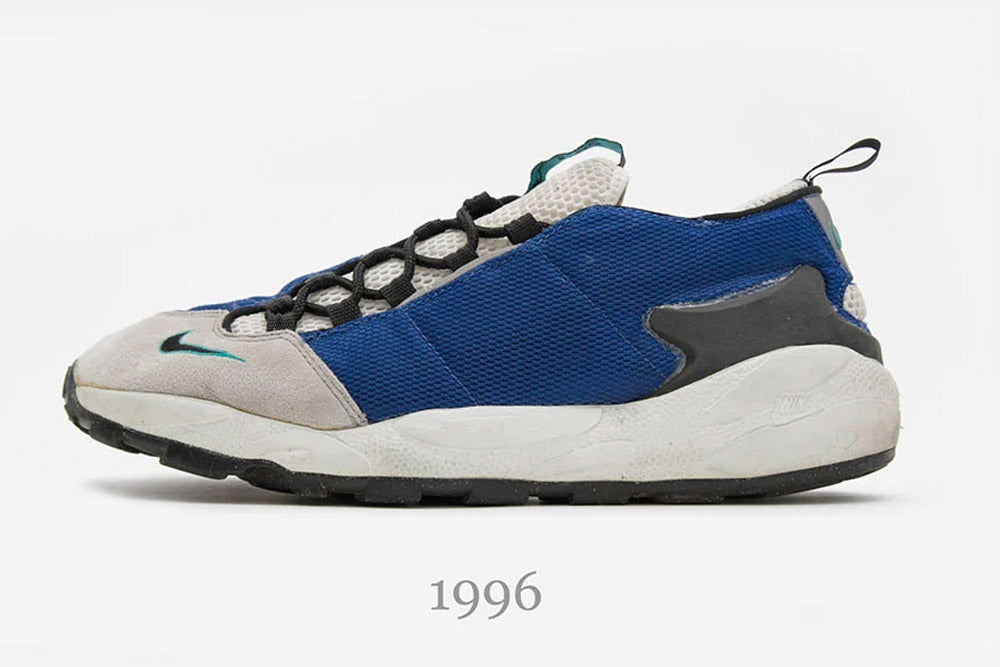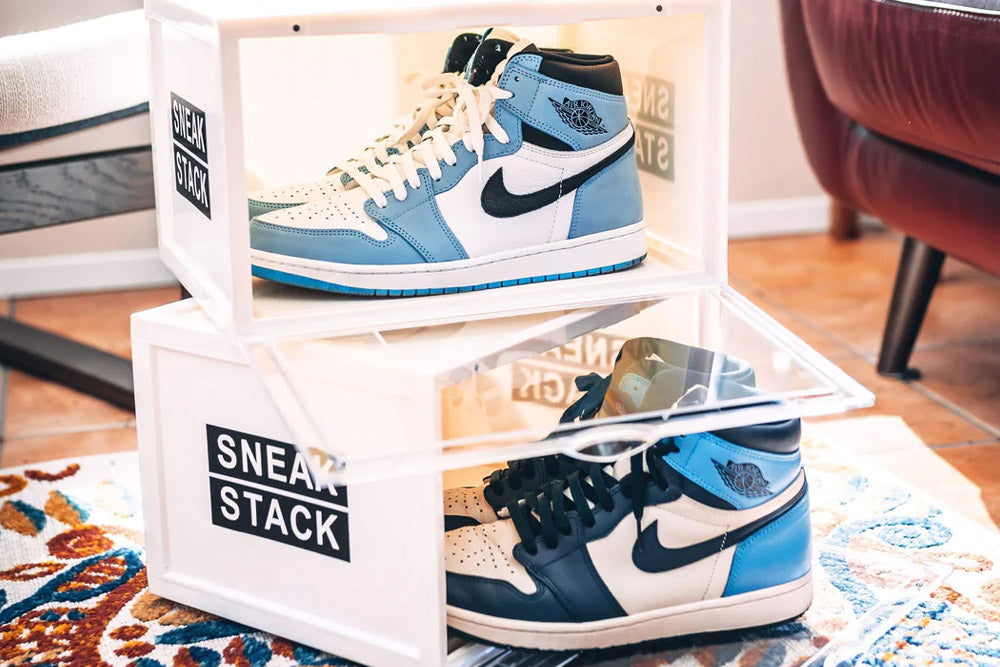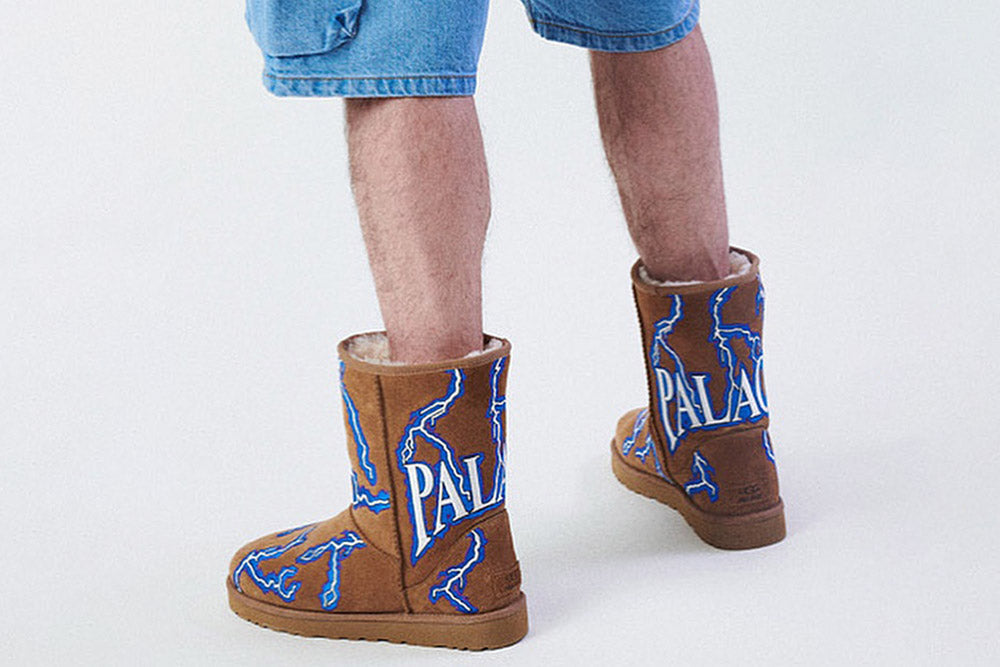
The Story Behind Nike's Air Footscape
By Jagveer Chahill- Author/Editor
It's 1995 and Nike are looking to release a new silhouette, one that would cement itself within the market, a runner that could display innovation and show off a new aesthetic.

(Photo Credit: Nike)
A STEP IN A NEW DIRECTION
The design team at Nike wanted to come up with something suitable for the wider footed consumer base, which at the time were not being seen to. Putting this at the forefront of their design strategy the team constructed a silhouette which featured a side lacing system and a wider fit.
Marketed as a performance and athletic sneaker, the phrase 'natural motion' was attached to the Air Footscape by Nike.
The initial release took place in 1996, with the sneaker quickly gaining attention. One of the OG colourways, as seen above in the original Nike marketing posters, has always been remembered amongst Footscape collectors and enthusiasts.
The pair consisted of a lot of mesh around the medial and lateral panels with the tongue was elasticated and made up of mesh whilst the mudguard was constructed of nubuck, it also featured the 'natural motion' outsole allowing for a range of flexibility.
The asymmetrical design was pleasing to the eye, something unique and the model took off, filling a gap in the market.

THE DEPARTURE
After the release of the OG Air Footscape, designer Tory Orzeck who proposed the idea of such a striking shoe left the company. After his departure Nike continued to release various iterations of the silhouette.
Tory, responsible for the vision of the OG pair mentioned the process behind getting the design and features right, the team had to meticulously cast the feet of men and women in order to understand foot shape and its 'natural motion', needless to say the higher ups at Nike needed some convincing at first, due to the unique nature of the design but in the end were won over by Tory's pitch.
With the original visionary and designer of the Air Footscape gone Nike turned to other teams in order to continue pushing new variations of the silhouette out into the market.
This started with the Air Stasis in 1996, the shoe was much of the same with subtle changes, a swoosh on the side panels along with some panel changes, the pair used more suede/nubuck but it wasn't without asymmetrical lacing and midsole/outsole that made the OG so iconic.

(Photo Credit: Sneakers Mag)
NIKE CARRY ON & INNOVATE
Other iterations of the silhouette included the Air Footscape 2 Presto which merged two models together, a fusion if you will. Released in 2001, it kept the same lacing system as the OG Footscape but leant into the midsole of the presto, with the upper also consisting of different panels from the Presto, some of them being redesigned for the new model.
Nike also experimented with the woven look from prior years, coming out with the Air Footscape Woven Chukka in 2006. The silhouette used the woven constructed from the infamous Air Woven from the early 2000's, implanting it on the Footscape.
Nike would come back to this style, more recently in 2012, adding a mid cut to the shoe and giving it a more 'handcrafted' look. This style was very popular amongst the diehard collectors of the silhouette, it carried the spark of the original whilst innovating once again with a free motion midsole, improving comfort.

(Photo Credit: Sneaker News)
THE INEVITABLE RETURN
In 2015 the market saw the Footscape return, the multi billion dollar company pushed the Air Footscape Magista out. It was met with mixed emotions, whilst still featuring the asymmetrical lacing system the release had truly lost the spark and idea of the original.
Many fans didn't take to the styling of the pair as it was based on the Nike Magista, a football boot which had been released around the same time. Instead of a mesh or woven upper, Nike used their Flyknit upper, giving people a stretchy sock like feeling on foot.
Although the pair was unarguably comfortable the collectors believed the OG design was gone with people saying the shoe looked like a football boot and runner put together.
Nevertheless, the pair did see success initially with lots of the customer base not knowing about the history of the Footscape they liked the release, the use of Flyknit and the Magista styling attracted footballers especially. The Footscape was reborn, for a new crowd.

(Photo Credit: Soccer Bible)
The Nike Air Footscape has a rich history behind the design of the model. It has cemented its place in history for some collectors and is often adored for its funky 90's features.
In Japan the pair has become extremely popular over time with many owning 100's of releases. This is because of the wider fit of the silhouette appealing to the consumers within Asia, it has become somewhat of a cult classic, whereas it is harder to find that same appreciation for the model and its history in Europe and America.
With collaborations alongside 'Fragment' in the past, the Air Footscape has seen some amazing colourways. We sure hope that the model is set for a big return in the future...







Leave a comment
This site is protected by hCaptcha and the hCaptcha Privacy Policy and Terms of Service apply.